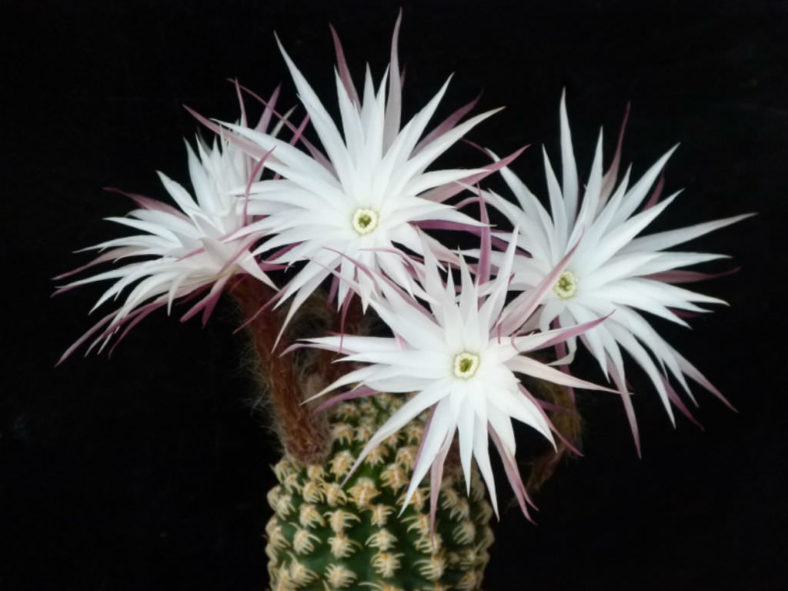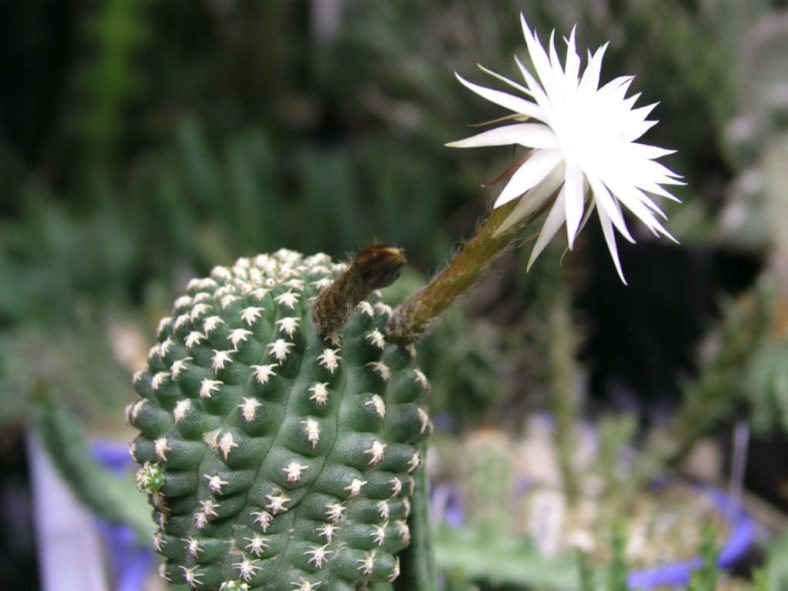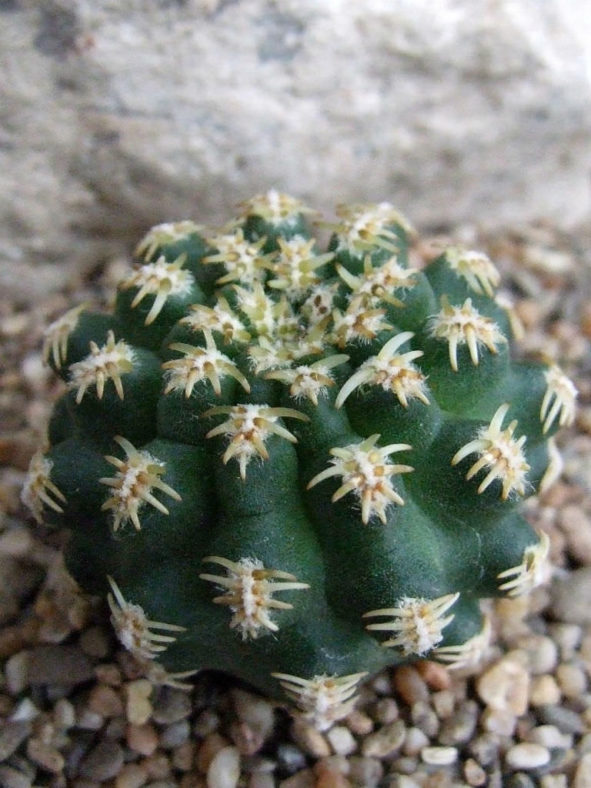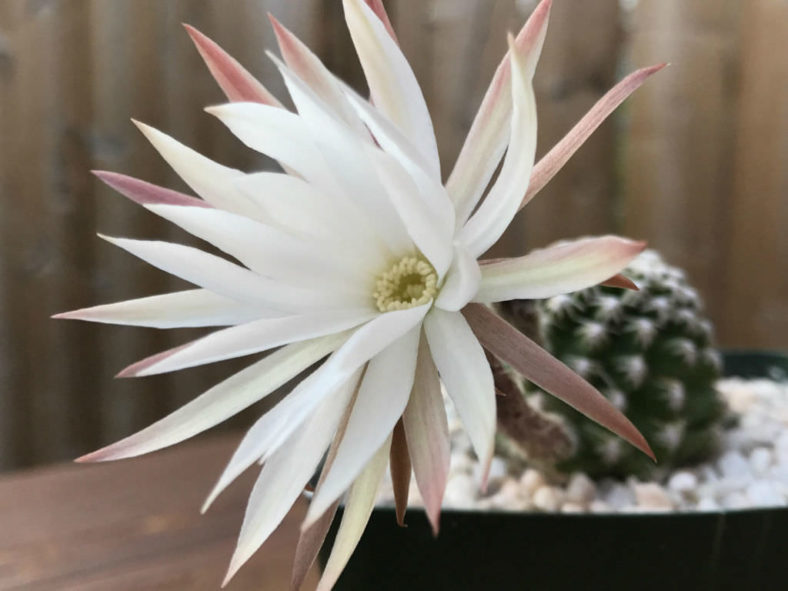Scientific Name
Pygmaeocereus bieblii Diers
Synonym(s)
Pygmaeocereus bieblii var. bieblii
Scientific Classification
Family: Cactaceae
Subfamily: Cactoideae
Tribe: Trichocereeae
Genus: Pygmaeocereus
Description
Pygmaeocereus bieblii is a small geophytic cactus with green stems with 10 to 25 tuberculate ribs lined with clusters of short, whitish to dark yellow spines. It usually grows solitary but occasionally forms a small clump. The stems are spherical and can measure up to 4 inches (10 cm) tall and 2 inches (5 cm) in diameter.
The flowers are white, funnel-shaped, and appear in summer, reaching up to 7.2 inches (18 cm) in length and 2.4 inches (6 cm) in diameter.

Hardiness
USDA hardiness zone 10a to 11b: from 30 °F (−1.1 °C) to 50 °F (+10 °C).
How to Grow and Care
Like most cacti, Cereus are fairly low-maintenance and hardy. Ensure they receive enough water without becoming waterlogged, especially during the summer, and fertilize them for the best results. If the roots have become black or overly soft, the cactus could be experiencing root rot. Cut away the affected parts and replant them. Most gardeners interested in cacti should cultivate these without much problem.
It may become necessary to repot your Cereus if it outgrows its container. First, make sure the soil is dry and remove the pot. Next, knock away old soil, prune out rotted or dead roots, replace it in a new pot, and backfill it with fresh soil. Ensure not to overwater cacti planted in new pots, as this can lead to root rot. It should be left dry for about a week and then watered lightly.
These cacti propagate pretty easily from cuttings. Simply sever a branch and replant in moist, well-drained soil.
See more at How to Grow and Care for Cereus.
Origin
Pygmaeocereus bieblii is native to Peru.
Links
- Back to genus Pygmaeocereus
- Succupedia: Browse succulents by Scientific Name, Common Name, Genus, Family, USDA Hardiness Zone, Origin, or cacti by Genus
Photo Gallery
Click on a photo to see a larger version.



